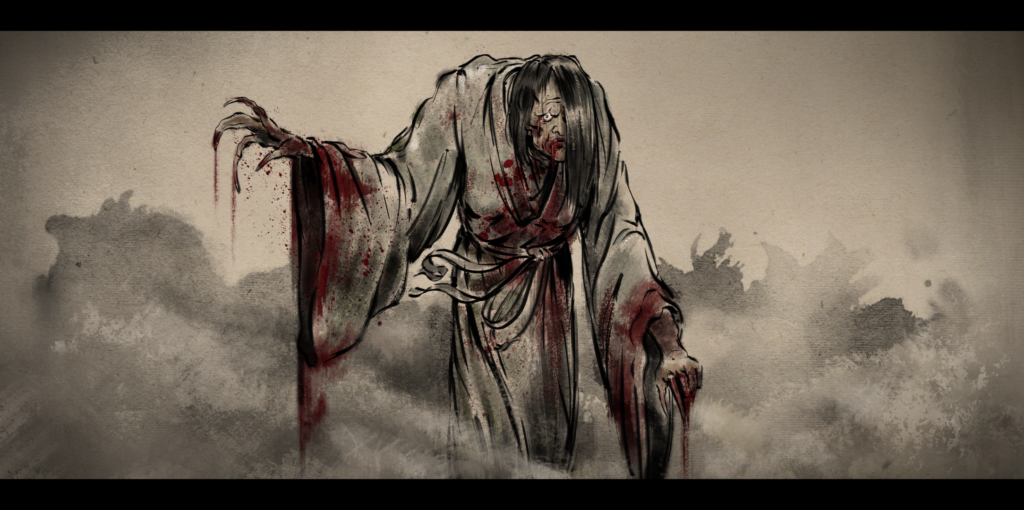
The concept of the wronged dead returning from the grave for revenge is likely universal. However, the Japanese onryo stands out even among other spirits of vengeance. The distinctive appearance, tragic circumstances, and destructive curse of onryo are enough to make them horror icons even today.
In short, an onryo is the vengeful spirit of a deceased person who was wronged in some way, died violently, or both. Rather than pass on peacefully, the spirit lingers to exact revenge on their target… and everyone else in the area. Onryo do not care if innocent bystanders are caught up in their quest for vengeance. And their grudges often seep into the soil, leaving a location cursed long after the onryo has been put to rest.
Although powerful, onryo usually prefer to torment their victims rather than kill them immediately like other deadly yokai. An onryo can cause disease, natural disasters, and madness in the name of vengeance. However, what makes onryo truly terrifying is that the only sure way to make their rampage stop is to appease them.
Some tales report that Buddhist monks or exorcists can purify these vengeful spirits. However, other tales depict onryo whose rampages were only stopped by efforts to remedy the injustices the spirits suffered in life. And even today, there are shrines to supposed onryo who are honored as kami to soothe their destructive rage.
Traditionally, onryo are depicted as women in white burial kimono with long dark hair covering their faces. However, there are also stories of male onryo as well, including the Heian period samurai Taira no Masakado. Whatever form an onryo takes, their indiscriminate wrath makes them one of the most feared yokai in Japan.
In Tale of Ronin, players may well encounter people who believe in onryo and fear locations said to be cursed. Players may be able to use these stories to their advantage. Certain choices may even lead gamers to enter strange places that might be best left alone… and ominous figures who seek vengeance at any cost.